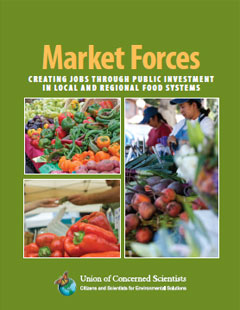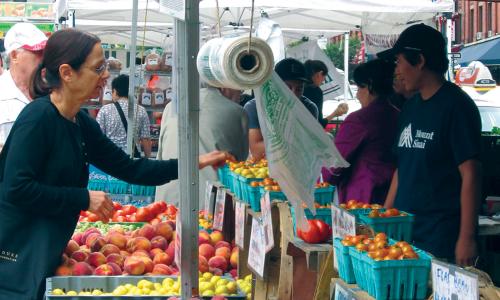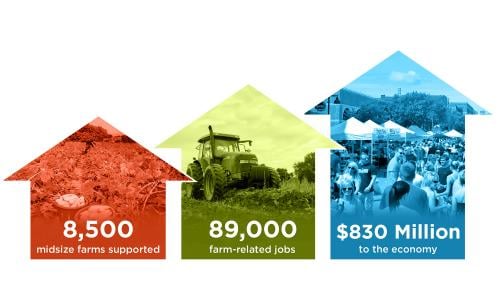As farmers market shoppers have long known, buying food directly from the people who grew it is a great way to add freshness and flavor to your table and more fruits and vegetables to your diet.
But locally grown food is not only good for your taste buds—it creates jobs, keeps money in local economies, promotes community development, and can reduce the environmental and public health costs of the food we eat.
To maximize these benefits, we need new policies aimed at helping local and regional food systems thrive and expand, according to Market Forces, a new UCS report that reviews recent research on these systems and their economic effects. The report recommends the following policy changes:
- Increase funding for programs that support local and regional food systems.
- Raise the level of research on the impacts of local and regional food systems.
- Restructure the safety net and ensure credit accessibility for local food system farmers.
- Foster local capacity to help implement local and regional food system plans.
- Support the realization of farmers market certification standards.
A fast-growing alternative
Local and regional food systems have expanded dramatically in recent years. There were more than 20 farmers markets in 2011 for each one that existed in 1970, and the number of community-supported agriculture (CSA) operations has grown in a few decades to over 4,000, according to one estimate highlighted in the report.
Other kinds of local and regional food systems experiencing rapid growth include farm-to-school and other institutional direct marketing operations; food hubs, which coordinate the marketing of locally grown food from farmers to wholesale and retail customers; and farm-based outlets such as roadside stands and U-pick operations.
Nourishing regional economies
As they grow, local and regional food systems create jobs and raise incomes in the areas they serve, keeping customers' food dollars active in the local economy as farmers increase spending on inputs and equipment to meet growing demand.
Local food outlets can also become catalysts for economic development in their immediate surroundings: people who shop at farmers markets are likely to patronize neighboring businesses as well.
The benefits can be substantial: according to the report, modest public support for up to 500 farmers markets each year could create as many as 13,500 jobs over a five-year period.
Changing buying (and eating) habits
The growth of local and regional food systems not only directly benefits local economies; it also promotes healthier eating habits. People who shop at farmers markets tend to come home with more fruits and vegetables in their shopping bags. Expansion of local food systems could ultimately help reduce health care costs from obesity and other health problems linked to a diet dominated by processed foods.
Food sold through direct marketing channels tends to be relatively less processed, which can result in significant energy savings—so expansion of local and regional food systems can also reduce the environmental cost of U.S. agriculture.
Challenges and solutions
Expansion of local and regional food systems faces multiple challenges: geographical and seasonal constraints, logistical and marketing issues, and policies geared toward commodity crop producers rather than farmers who sell a variety of crops to a local or regional market.
To address these challenges, Congress, the USDA, and state and local governments need to revise their policies and funding priorities with the goal of promoting local and regional food systems, so that more communities can enjoy the abundant benefits they offer.







